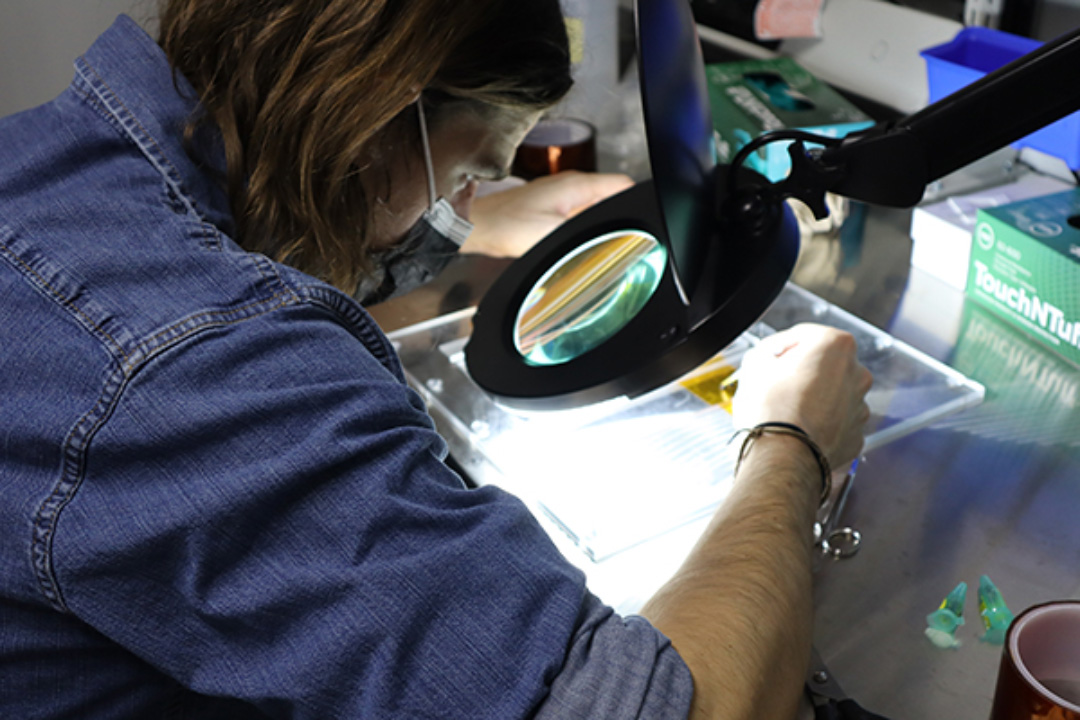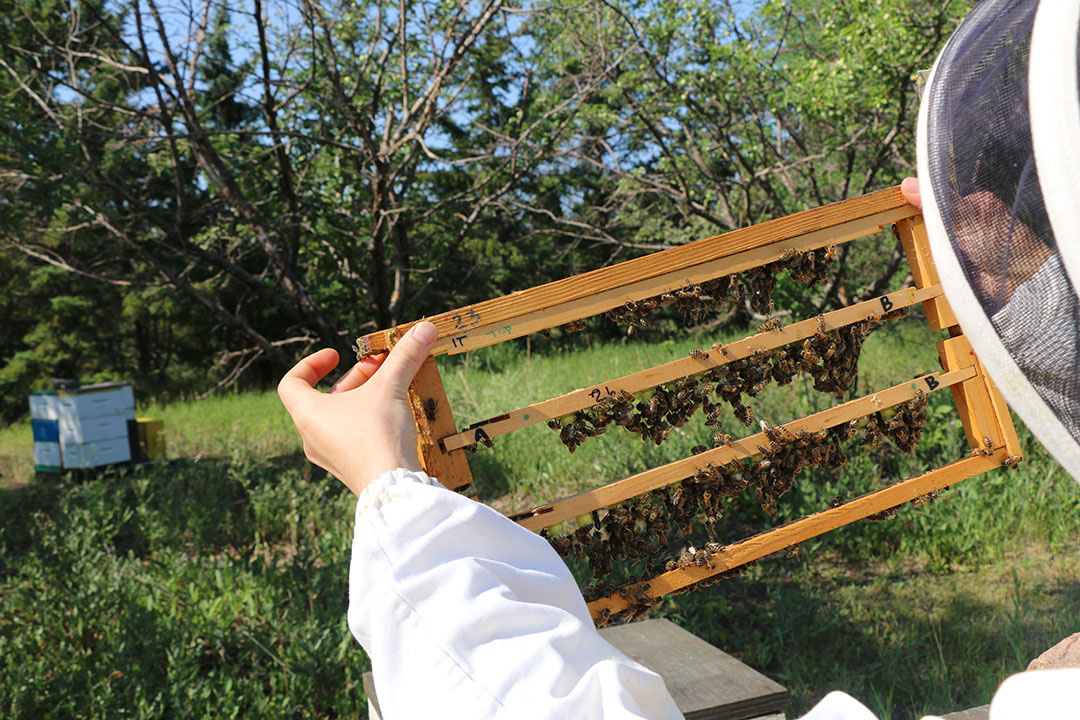
How the health of your plants can affect bee pollination: USask research
It’s springtime on the Prairies, and with spring comes planting season, both in vast fields and small backyard gardens.
By BROOKE KLEIBOERUniversity of Saskatchewan (USask) researchers are investigating how farmers and gardeners can best support pollinator species such as bumble bees to help them out during growing season – and find insights on what might be causing them to veer away from certain plants or areas.
The health of bees and other pollinators is a major concern of many researchers today, as bees play a major role in the food supply and health of the planet. It is estimated that one third of the human food supply depends on insect pollination – the majority of which is done by bees. The United Nations recognizes World Bee Day on May 20, to bring awareness to the important contributions of bees to the sustainability of our planet’s animal and plant populations.
Dr. Sean Prager (PhD), a professor in the USask College of Agriculture and Bioresources, has dedicated his lab to the study of insects, and some of the lab’s research focuses on how plant stress can change how pollinators interact with plants.
"We’ve done several studies on community ecology, which are the differences in the bee communities in different places,” said Prager. “This allows you to compare climatic change and weather differences, and changes over the long term.”
Examining how environmental changes cause stress on plants – and how this influences if and when bees choose to visit flowers from a particular plant – is important as these decisions can cause ripple effects in pollination efforts.
Prager said the way bees choose which plants to visit is a similar concept to grocery shopping.
“For example, if you go to the grocery store and I give you choices of different things to eat, you have some vague idea of what you do and don’t want,” he said. “The same thing goes for bees. There are differences in quality. But sometimes they don’t always immediately understand this, because you need a cue to see these differences.”

A PhD candidate in plant sciences, Caleb Bryan shines a unique light on how bees make their choices when choosing plants to interact with, by examining some of these potential environmental cues.
“My research itself is very simply looking at the consequences of climate change and how that’s going to impact our native pollinators, potential pollination and crop yields,” said Bryan. “What things can they detect and how is that going to impact their reproductive viability long-term?”
Although predicting bee behaviour and considering how a multitude of environmental factors plays into that behaviour is a difficult task, the equation becomes even more complicated when considering how intelligent bees are.
“Not only can [bees] learn things, they can transmit or communicate that information,” said Prager. “They are capable of solving problems, they are capable of learning and they absolutely have memory because you have to have memory to learn. They then adapt their behaviour in response to those situations and can be taught.”
Implications that stem from being able to learn and remember are that some bees may choose to avoid areas that they have encountered where the available nectar and pollen is not up to their standards. This behaviour depends on the nectar and pollen quality available in an area any given season, but is an important factor to consider as climate change, industry, and other environmental impacts will change the natural ecology of an area.
“Social species like bumble bees are really intelligent when it comes to finding flowers, remembering flowers and their cues,” said Bryan. “And we know plant stress drastically impacts the cues that all these plants give off.”
Bryan’s research work includes leveraging the technology available at the Canadian Light Source, Canada’s only synchrotron facility. One of Bryan’s current projects involves testing to see if bees that are exposed to heavy metals have an impaired ability to recall information.
“Generally, I focus on climate change and agriculture, but this is going at it from the urban side,” said Bryan. “In all these urban areas, you have remnants from industry and things like that. So, we’re looking at how heavy metals accumulate within bees, what the microbes within the bees can do as far as detoxifying those metals, and then any detrimental learning or reproduction that comes from those exposures as well.
“I can tell you that the heavy metals that bees will run across inside urban settings may have some detriment to their actual behaviour,” added Bryan, who is still actively collecting data for the project. “I find it interesting that you would think insects would be able to tell when there’s a severe change to the quality or composition of their nectar, but we’ve seen previous research that shows that while we detect heavy metals and other pollutants in nectar, that bees can’t really tell the difference from healthy plant nectar and plants that have been stressed with these heavy metals.”
Bryan said these are important factors to consider in urban gardening environments, and in industrial landscapes such as mines, where protecting natural species and landscapes while still being able to complete essential human activities is paramount.
The team’s research interest also lies in finding methods to help growers manage the health of pollinators and their plants in a beneficial way for all. So, what can local farmers and gardeners do to improve plant conditions to encourage bumble bees to pollinate?
Leaving yard waste in place, and doing research before establishing honey bee hives in your own yard, are two of Bryan’s best pieces of advice for bee enthusiasts.
“We’ve seen time and time again with research coming from different labs that honey bees are outcompeting our native species. Since they’re not from here, they aren’t as great a pollinator for our native plants,” said Bryan.
Creating a home for bees in your own yard over winter is also easier than maintaining a hive.
“For people in urban areas, I suggest looking up boxes and different housing options and to not clear out waste in yards, because that’s where a lot of these insects reside over winter,” said Bryan. “Designate a section of your yard where you can allow a pile of bees to be and rake a large pile of leaves to stay for the winter.”
Together, we will undertake the research the world needs. We invite you to join by supporting critical research at USask.

